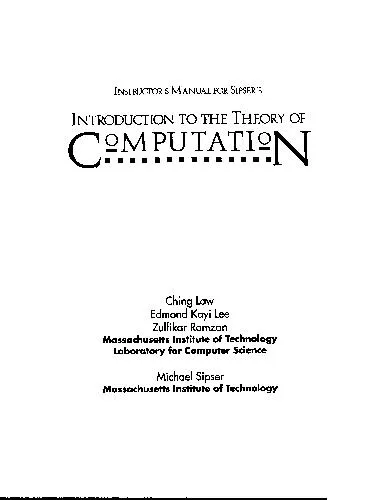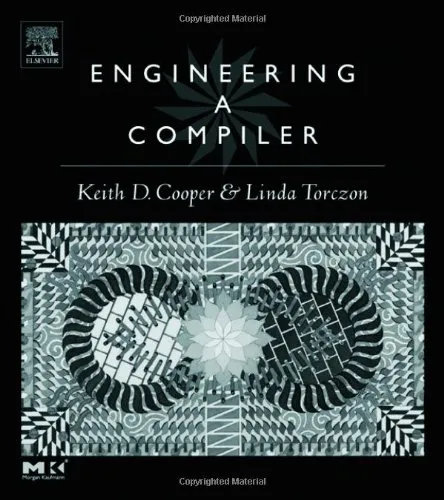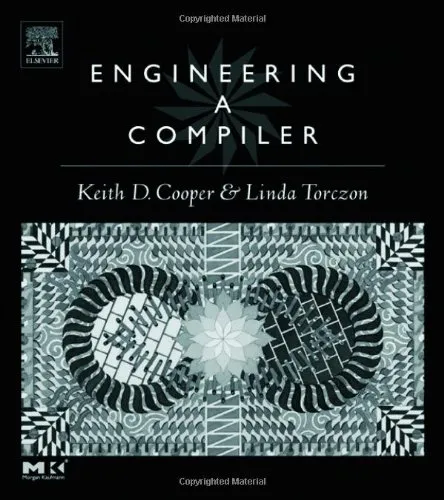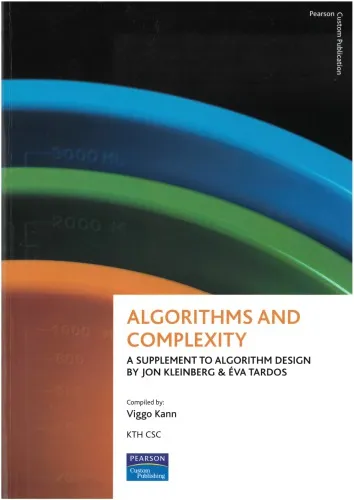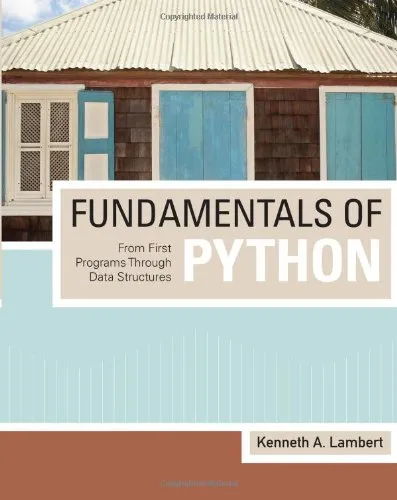Introduction to the Theory of Computation (Solution Manual )
4.6
Reviews from our users

You Can Ask your questions from this book's AI after Login
Each download or ask from book AI costs 2 points. To earn more free points, please visit the Points Guide Page and complete some valuable actions.Related Refrences:
Persian Summary
Introduction to the Theory of Computation (Solution Manual)
Welcome to a comprehensive guide that provides state-of-the-art solutions to one of the most rigorous subjects in computer science— theoretical computation. This manual is a definitive companion piece to "Introduction to the Theory of Computation" by Michael Sipser, offering detailed solutions that illuminate the path to understanding the vast landscape of computational theory.
Detailed Summary of the Book
The "Introduction to the Theory of Computation (Solution Manual)" serves as an indispensable resource for students and instructors alike, craving a deeper grasp of computational theory. It navigates through chapters presenting problems from the main textbook, offering step-by-step solutions and insightful commentary. The manual delves into the world of automata theory, complexity theory, and computable functions, unveiling the underlying structures that drive computer algorithms and systems. By marrying theory with practical exercises, this solution manual helps bridge the knowledge from conceptual understanding to real-world application. Each chapter methodically addresses exercises, ensuring that learners clearly understand essential topics like Turing Machines, P, NP, and the properties of decidable and recognizable languages.
Key Takeaways
- Grasp the intricacies of automata, languages, and computation with solved examples.
- Gain insights into an NP-complete problem and the nature of computational intractability.
- Understand Turing machines and how they model computational concepts.
- Dissect complex topics such as quantum computing and complexities with clarity.
- Develop critical problem-solving skills through varied and challenging exercises.
Famous Quotes from the Book
"Understanding computation is the foundation to unearthing the limits and potentials of what can be solved by machines."
"In every problem, there is an opportunity to unravel the beauty of computational theory and its real-world applications."
Why This Book Matters
The domain of theoretical computation extends far beyond academic curiosity; it impacts how we approach complexities in the digital age. "Introduction to the Theory of Computation (Solution Manual)" plays a crucial role in equipping future computer scientists and engineers with the conceptual toolkit required for innovation. By solving complex theoretical problems, learners acknowledge the boundaries and capabilities of algorithms, fostering a profound understanding that is essential in an age where technology continually reshapes how we live and work. Accompanied by a rich array of solved exercises, this manual not only aids academic success but also encourages intellectual curiosity and advances the computational conversation. The book stands out as both a scholastic resource and a launchpad for advanced inquiry into computational theory.
Free Direct Download
You Can Download this book after Login
Accessing books through legal platforms and public libraries not only supports the rights of authors and publishers but also contributes to the sustainability of reading culture. Before downloading, please take a moment to consider these options.
Find this book on other platforms:
WorldCat helps you find books in libraries worldwide.
See ratings, reviews, and discussions on Goodreads.
Find and buy rare or used books on AbeBooks.
1796
بازدید4.6
امتیاز0
نظر98%
رضایتReviews:
4.6
Based on 0 users review
Questions & Answers
Ask questions about this book or help others by answering
No questions yet. Be the first to ask!
